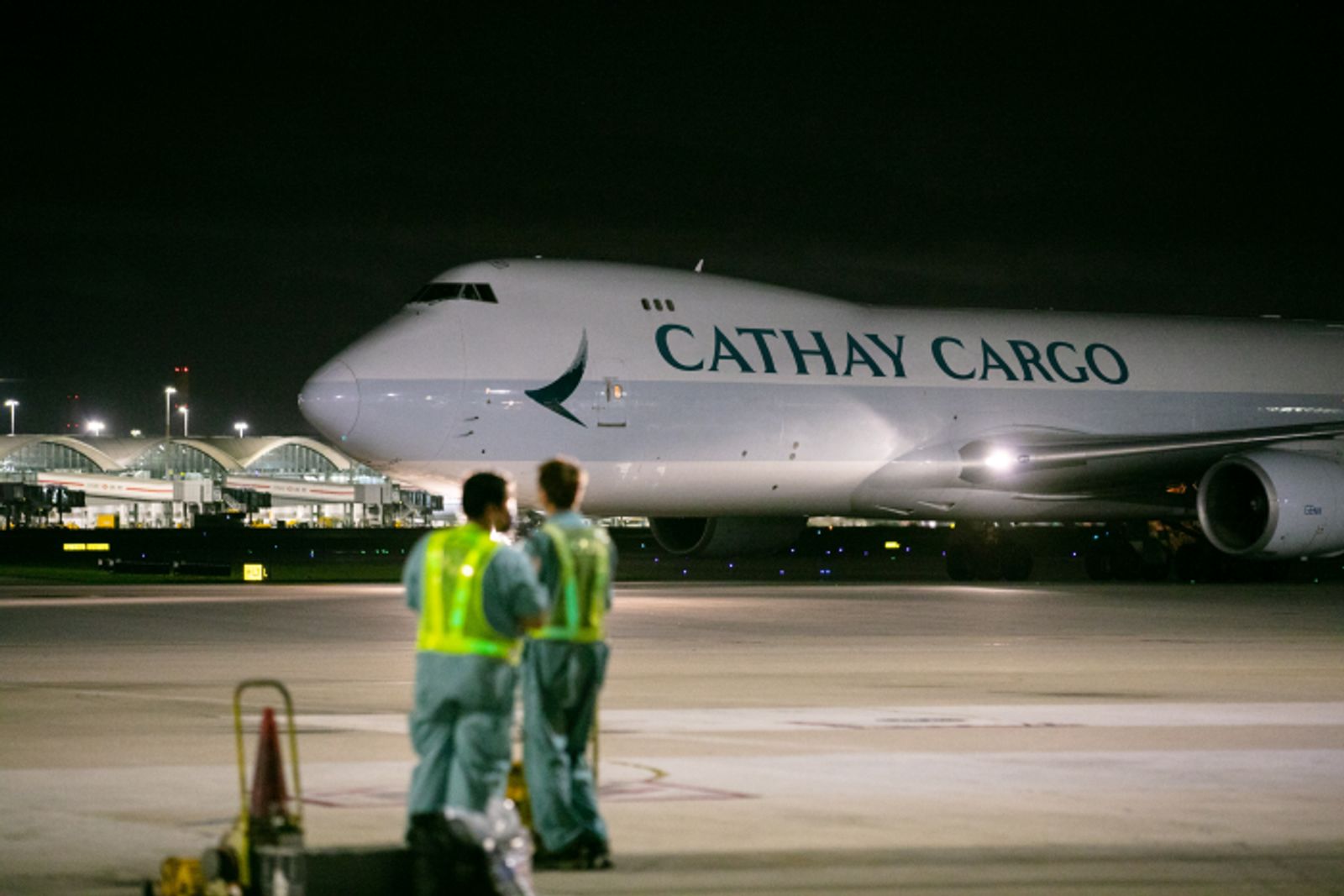
Frontloading from Asia to the US by ocean shippers appears to have sucked the demand out of the trans-Pacific air cargo business, with little sign of rising volume and rates before the pause on higher US tariffs expires in August.
Data from air freight analyst Rotate shows capacity deployed on China and Hong Kong routes to the US is down slightly over the past four weeks at 36,000 metric tons. Frontloading of ocean freight and the sharp drop in e-commerce demand following a US clampdown on low-value Chinese imports have reduced the need for trans-Pacific air cargo.
“While difficult to say exactly, we do see high levels of inventory combined with a relatively long lead up to the new tariff announcements which allowed shippers to plan ahead and choose a more cost-efficient method of transport,”said Jonathan Mellink, head of sales and marketing at Rotate.
Online freight marketplace Freightos has drawn the same conclusions — with the low appetite for air freight evident in spot rates. The Freightos Air Index this week shows air cargo rates to the US from major trade partner origins were level with or slightly lower than just before an Aug. 1 extension to the 90-day tariff pause was announced in early July. A separate pause on higher tariffs on Chinese goods is due to expire Aug. 14.
“For businesses shipping out of China, the 90-day tariff extension spurred a surge in ocean volumes and was likely long enough so that most frontloading ahead of August has been done by container,” said Judah Levine, head of research at online freight marketplace Freightos.
“In the couple of weeks since President Donald Trump extended the reciprocal tariff deadline, we haven't seen a surge in demand or upward pressure on inbound US air cargo rates from countries granted the extension,”Levine added.
Freightos data shows rates from China to the US this week are $5.17 per kilogram, down 7% from early July and 3% lower year over year.
While there may be a bump in volume and rates as the August deadline approaches, Levine said the lack of air freight demand reflected shippers'expectations of de-escalations and deals, or possible further extensions to the tariff deadlines.
Framework deals announced
Mike Short, president of global forwarding at C.H. Robinson, said air freight remained an option for shippers looking to frontload before the new deadline,“but it all depends on their inventory needs and supplier readiness,”he told the Journal of Commerce.
Many of the countries facing new tariff rates from Aug. 1 are manufacturing powerhouses in Asia, such as Thailand (36% tariffs), South Korea (25%) and Malaysia (25%). The levies will include air freight-friendly commodities such as pharmaceutical imports and semiconductors.
Some framework deals have been made with the US. A deal reached recently with Vietnam will see tariffs set at 25% for US exports and 40% for any goods“transshipped”through the country en route to the US, while deals were reached with the Philippines and Indonesia this week setting tariffs at 19% — although no details have been revealed.
While the tariffs on Asian countries might have some indirect benefit to the air cargo industry through frontloading, the loss of huge e-commerce volume still affects the trans-Pacific business directly.
In 2024, e-commerce shipments accounted for close to 50% of China-to-US air freight volume, with the big Chinese platforms Temu and Shein filling dozens of freighters every day. But that spigot was turned off by President Donald Trump on May 2 with dramatic effect.
The duty-free exemption for low-value imports from China valued at under $800 was eliminated, although that was followed on May 14 by a reduction of de minimis tariffs from 120% to 54%. Items sent via post from China to the US are now charged a flat fee of $100, regardless of value.
China-US air cargo demand fell more than 30% in June year over year following a 28% drop in May. Data from Rotate for July shows China’s e-commerce exports to the US falling 44% year over year, even as e-commerce exports to all other countries recorded robust growth of nearly 50%.
‘Precipitous fall’in China-US e-commerce
The effect of the US tariffs on China's two main e-commerce platforms, Temu and Shein, has been significant. Market intelligence firm Sensor Tower estimates that from April to June, Temu's US downloads fell 77% year over year and Shein's were down 51%.
Sensor Tower noted the“precipitous fall in app usage”could be tied to each company's advertising spend in the US in June that for Temu was down 87% year over year and for Shein dropped 69%.
Meanwhile, the ability to offset the e-commerce-driven drop in China-Europe air freight with growth in other markets was noted by Kuehne + Nagel CEO Stefan Paul on the forwarder's first-half earnings call with analysts Thursday.
Paul said he was expecting a strong air cargo peak season later in the second half with“high single-digit growth”in volume in the fourth quarter driven by increasing demand for perishables, semiconductors and“hyperscalers” — IT equipment providing the cloud infrastructure that powers modern digital applications and services.
Airlines are also increasing their focus on traditional cargo customers, with Cathay Pacific saying business has been booming.
“We observed significant growth in tonnage from Southeast Asia and the Taiwan region to the Americas, driven by both general cargo and high-tech electronics,”Lavinia Lau, chief customer and commercial officer at the Hong Kong-based airline, said in a statement on the carrier’s June operations.

